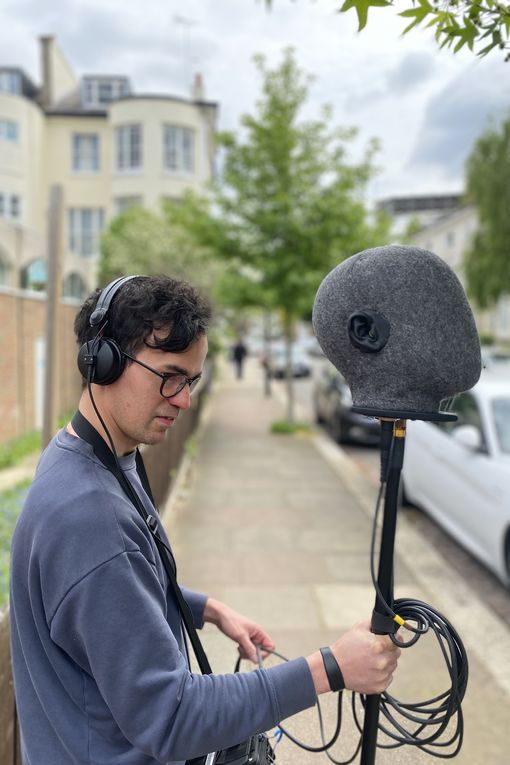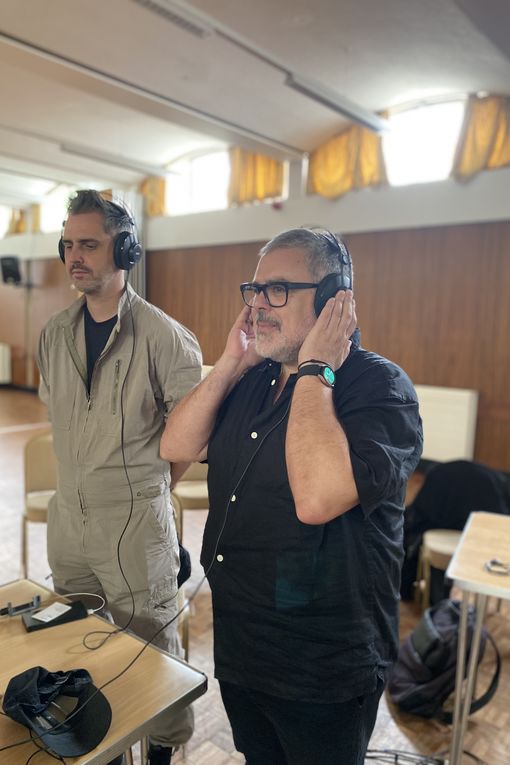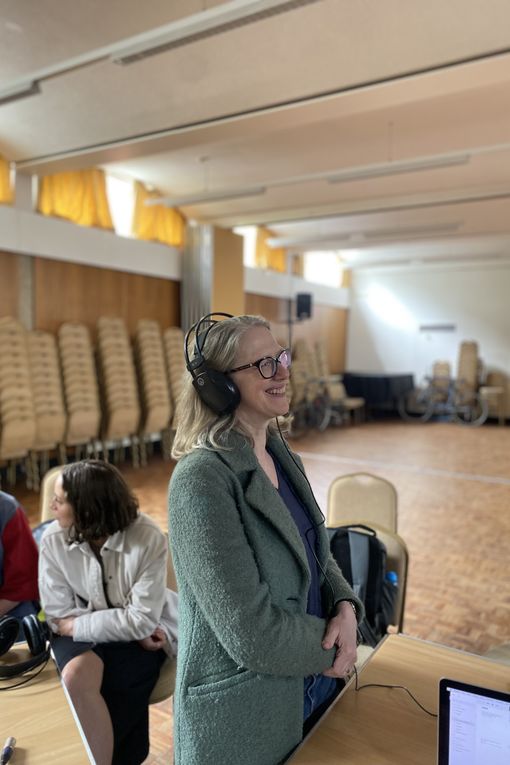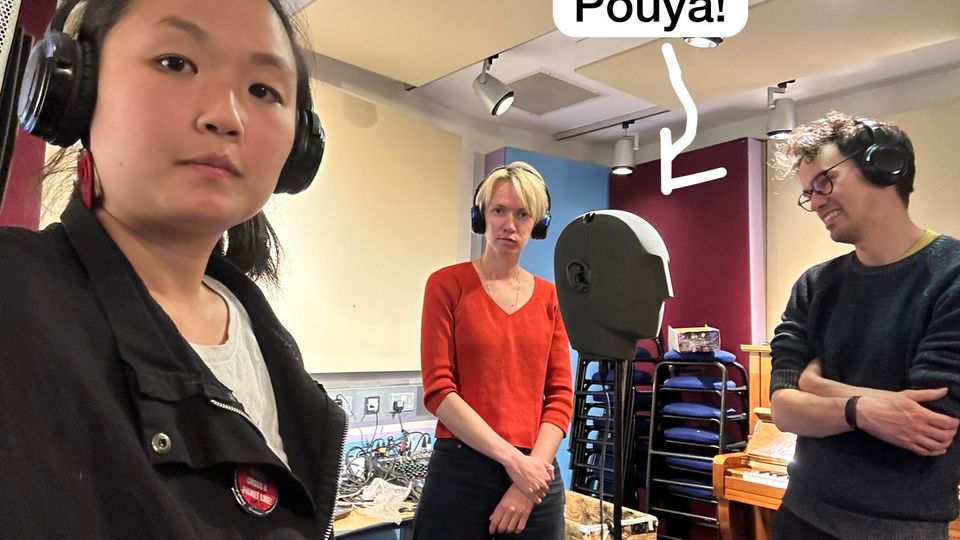I had fun with my colleagues: a binaural sound training session
Malachy Orozco is a member of theatre company collective ROOM and a member of staff in Central’s Technical and Production team. He took part in a workshop to explore new binaural sound equipment with colleagues and reflects on the experience here.
Binaural sound recording creates immersive 3D spatial experiences for listeners, a more ‘human’ listening experience. It is stereo, but the ‘binaural effect’ only happens over headphones via the Head-Related Transform Function

Please tell us about ROOM.
To quote from our website:
ROOM is a story-telling experience for one (or more) blindfolded person(s). It’s entirely improvised each time in response to the audience’s imagination. Amongst many other things, it has been described as virtual reality without a headset, an imagination massage, a collective lucid dream and purposeful daydreaming.
Partly as a response to text-based computer games that give the illusion of autonomy, the experience affords an imaginary space where there are absolutely no limits. Co-created by the audience and the narrators, it’s a live manifestation of collaboration and co-authorship.
ROOM, which forms a cornerstone of my practice, is performed primarily live, but can be performed remotely. The use of the binaural head permits for the simulation of being in the space with the performers. The sonic world of ROOM when it is performed ‘live’ (with audience and performers in the same physical space) is both aural and somatic: in flapping a paper fan to create a desert breeze, for example, the audience member is also physically cooled. The hair follicles on their skin ‘listen’ as much as their ears do. While this somatic effect is absent in the ‘remote’ ROOM, the binaural head achieves as much of a midpoint as is possible.

How did you experience the workshop, from a technical perspective?
I noticed the discussions on how the new equipment might be used. I noticed the variety of questions each person wanted answered. And what these questions revealed about their interests, their practices. Whose head are we listening to? From whose perspective?
I found it interesting that the technical staff were there, alongside academics and PhD students. I found it interesting that the arrival of new objects implies new techniques. It was nice to hear clear language around the degree of specificity we’ll need to use to match equipment and projects. I left the workshop equipped with the ability to define the difference between different kinds of audio arrangements.
How will you be able to use the new equipment and techniques?
I’ve already used the equipment and methods learned in the workshop to deliver a live, binaural performance over the web with ROOM. Pieces are already being developed with this new equipment in mind.
There were people in the room that I’ve never met before and new links were being made between departments which I hope will lead to future collaborations.

Aside from learning about the technicalities of the new equipment, what did you value about the workshop?
I found it interesting to be in a co-creative space with people I usually interact with on a more functional level. Usually the questions from colleagues in my day job are: where is the thing? when will the thing be at the place? how will the thing be used? This was more fun. I had fun. It was fun to have a moment of play with my colleagues.
I found it interesting that the use of binaural recording creates a ‘reference point’ for where the listener is presumed to be. I’ve now had a chance to work with it in a live setting, and I’m starting to get a sense of how this ‘reference point’ effect can be used to simulate motion.
I’m so excited about what future collaborations this will lead to.

